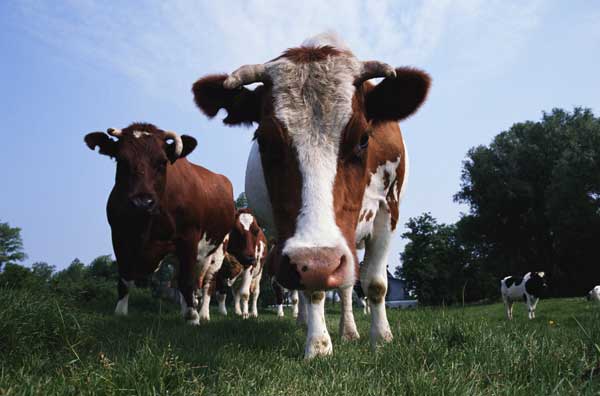
External parasites create stress, reduce production
External parasites—including flies, ticks and lice—weaken cattle, increase stress and sap essential nutrients.Livestock managers have numerous options for external parasite control.Rotate products, from one class to another, to reduce potential for resistance.

Clay Wright, livestock consultant with the Samuel Roberts Noble Foundation, speaking at the 2011 Ag Technology conference in Commerce, Texas, said external parasites—including flies, ticks and lice—weaken cattle, increase stress and sap essential nutrients, often at the most vulnerable times for maximum growth, reproductive capabilities and milk production.
External pests include face flies, horn flies, ticks and lice.
“Face flies cause trouble just during the day,” he said. They gather around the eyes and muzzle—moist areas. “They are the most common means of spreading pink eye.”
Horn flies “inflict a painful bite,” Wright said, “and are on cattle twenty-four/seven. They also will travel as far as two miles for a blood meal.”
Horn flies have a two-week life cycle and may produce as many as seven to ten generations in a summer. Treatment threshold is 200 flies per animal. “That’s not a lot of flies on a 1200-pound cow,” Wright said.
He said cattlemen typically control ticks with treatments they use to control other parasites.
“Lice can make a big economic impact if left uncontrolled. Biting lice, which feed on blood, are worse than chewing lice. Cattlemen have to deal with lice problems since they spend their whole lives on an animal; they over-winter on cattle.”
Livestock managers have numerous choices for external parasite control, Wright said. Options include:
Spray products. “With a spray we know we hit every animal,” he said. “With some products we have no withdrawal periods; with others we do. Some products have restrictions on some animals (calves, lactating cows, etc.). Some have interval restrictions. Also, product applications may differ, from spray-to-wet to runoff. Read the label!”
Pour on products. “These are ready to use. Retreatment is likely to be needed in about four weeks. These are contact products so they must come in contact with the pest.”
Feed-through products. “These products are designed to pass through the animal and kill larvae in manure pats. All cattle must eat it to be effective and some animals never eat salt or mineral blocks and some do regularly.”
Ear tags. “Ear tags are expensive but effective,” Wright said. “Several products are available—pyrethroid, organophosphate, or both. Use one or the other,” he said, “and rotate every other year to prevent resistance. Don’t take shortcuts. If it says use two per animal, use as per the label.”
He said cattlemen should watch the pest threshold and spray first before putting in the ear tags so “you don’t have to play catch up. Ear tags can be season-long control but you need to get them out in the fall and take care of flies in some other way.”
Back rub. “Back rubs are my favorite,” Wright said. “Cows learn quickly how to use them. Cattlemen should recharge them once a month or following every rain. “Hang them low, low enough for calves to rub. Also, place back rubs near mineral feed bins.”
He said dust bags are not as effective.
Other options may include rotational grazing but Wright doesn’t have much confidence in an ability to move cattle far enough away from pests to be effective. “Flies will move, too,” he said.
Dragging manure out after rotating pastures may help. “Drag it out, spread it out, bust up the patties and let it dry it out,” he said.
Wright said cattlemen should pay close attention to labels of any products they use to control parasites. “Product withdrawal periods before slaughter may vary, so read the label. Also, rotate products, from one class to another, to reduce potential for resistance.”
About the Author(s)
You May Also Like





